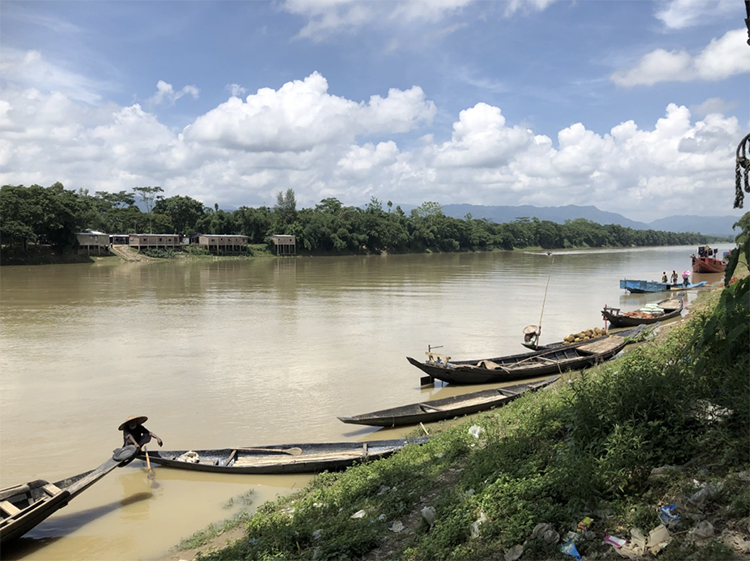
Bangladesh, a densely populated country of over 160 million people, regularly faces climate hazards caused by flooding and typhoons. However, another natural hazard lies silently beneath the country: active tectonic faults. The fault system below Bangladesh is estimated to be able to generate an earthquake of magnitude 8.5 or greater – a phenomenally dangerous possibility, given that it lies only a few kilometres below the surface. Such an earthquake would also trigger secondary hazards: liquefaction, flooding, and possibly even abrupt shifts in the course of rivers. Despite its extreme hazard, this fault system remains poorly understood.
Bangladesh sits on the eastern border of the collision zone between India and Eurasia, where the Indian plate is subducting eastward below the Burma plate. Most subduction zones lie deep beneath the ocean and are therefore hard to study. This one, however, approaches the surface at the mouth of the Ganges and Brahmaputra rivers, which have deposited more than 10 km of sediment over millions of years. These accumulated sediments have raised the ground level and millions of people now live directly above the active tip of the subduction zone.
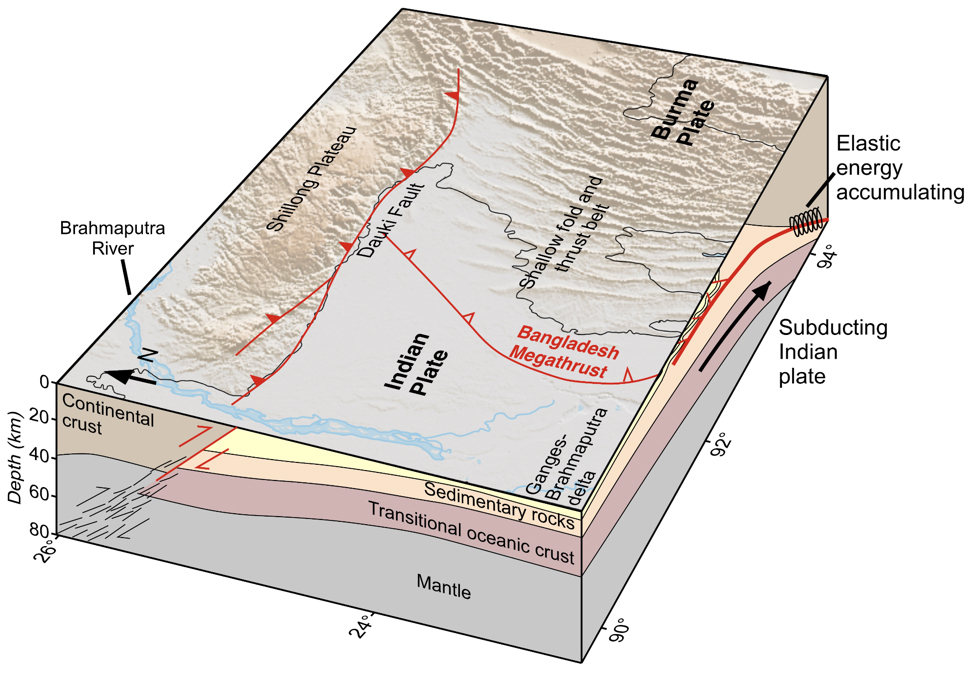
This uniquely subaerial region offers the opportunity to study deformation at the tip of a subduction zone. GPS measurements show that the plates are converging at 12-24 milimetres per year1,2 – as fast as the Himalayan collision zone to the north. This convergence is building up elastic energy deep below the mountains to the east, much like a spring. When that “spring” lets go, it will push the rocks of the Burma plate to the west, and the fault will slip. We aren’t sure what will happen then: will the fault slip fast enough to cause shaking? How much of the fault will slip in one go? Short-term measurements from GPS or seismometers can’t answer these questions, because the “spring” is still compressing.
When we started this work, we needed a new approach to learn about this system, with the hope that it would give us insight into its behaviour.
In our new paper published in the Journal of Geophysical Research, we study the largest fault in eastern Bangladesh: the megathrust (the fault that separates the two converging plates). To map out its shape, we searched for regional seismic reflection lines. These lines are essentially "ultrasounds" of the Earth’s subsurface, acquired by oil and gas companies using explosives or vibrations. We found 28 such lines, scattered throughout eastern Bangladesh!
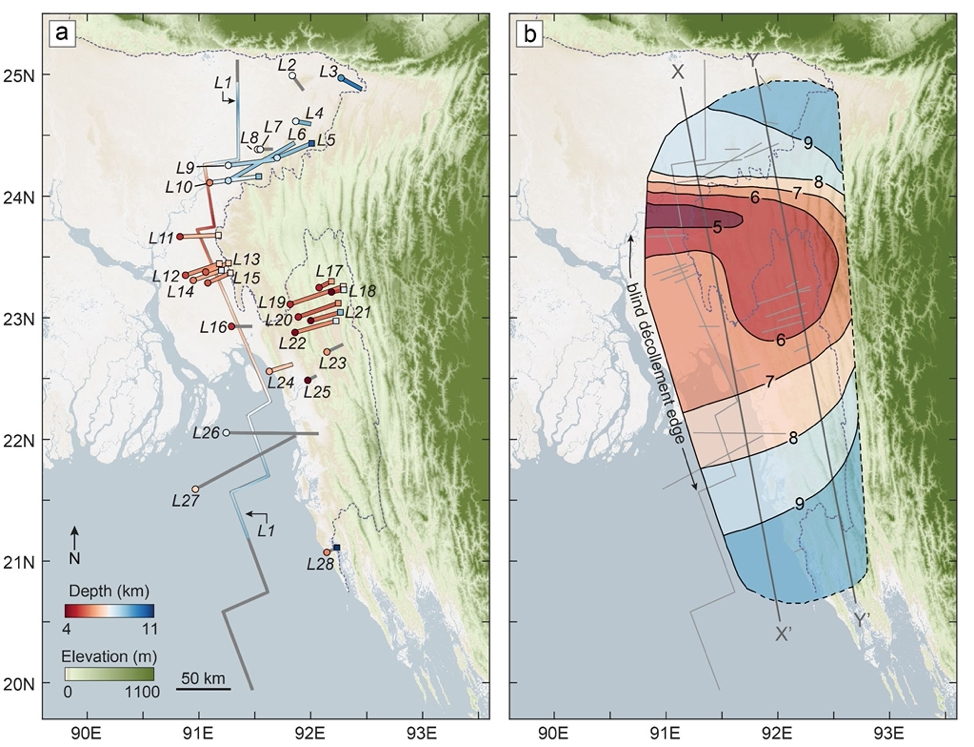
However, the images didn’t directly measure the depth of subsurface features. Instead, they recorded the time it took for acoustic energy to travel into the Earth, reflect off buried layers, and travel back to the surface. Determining how that data relates to the depth of subsurface layers required another search – this time for well data, to determine how fast seismic waves travel through the different rock layers. By using this well data combined with velocities recovered from the seismic profiles, we were able to convert the profiles to depth and map out the shape of the megathrust.
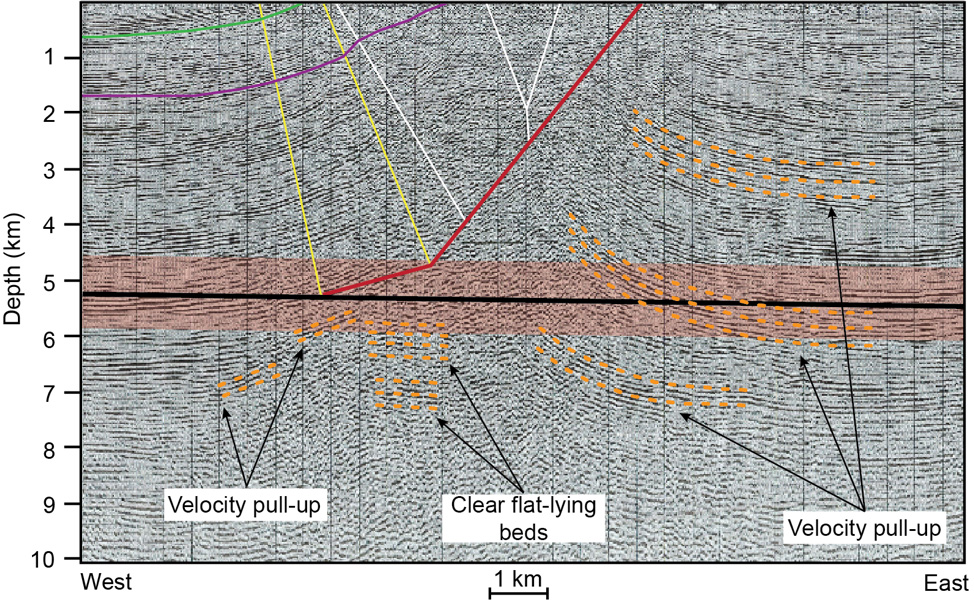
What did we find? Although most megathrusts tilt in one direction as they extend into the Earth, this one is different. It is warped, lying only 5 km below the surface in its central section, and deepening to more than 9 km below the surface in the north and the south. The warping is caused by a combination of sedimentology and tectonics. In the south, the crust is being weighed down by sediments deposited in the Ganges-Brahmaputra delta. In the north, the sediments are being forced below the Shillong Plateau at yet another convergent zone3.
What does this mean for earthquakes? The unusual shape of the fault could change how earthquakes propagate. We think the shallow backbone of the megathrust might act as a boundary for propagating earthquakes, causing them to slow or even stop. In some regions, clays that form at specific depths on shallow faults prevent the faults from slipping faster than a natural “speed limit”. Since the megathrust crosses between different depths, that could happen here, leading to smaller, patchier earthquakes.
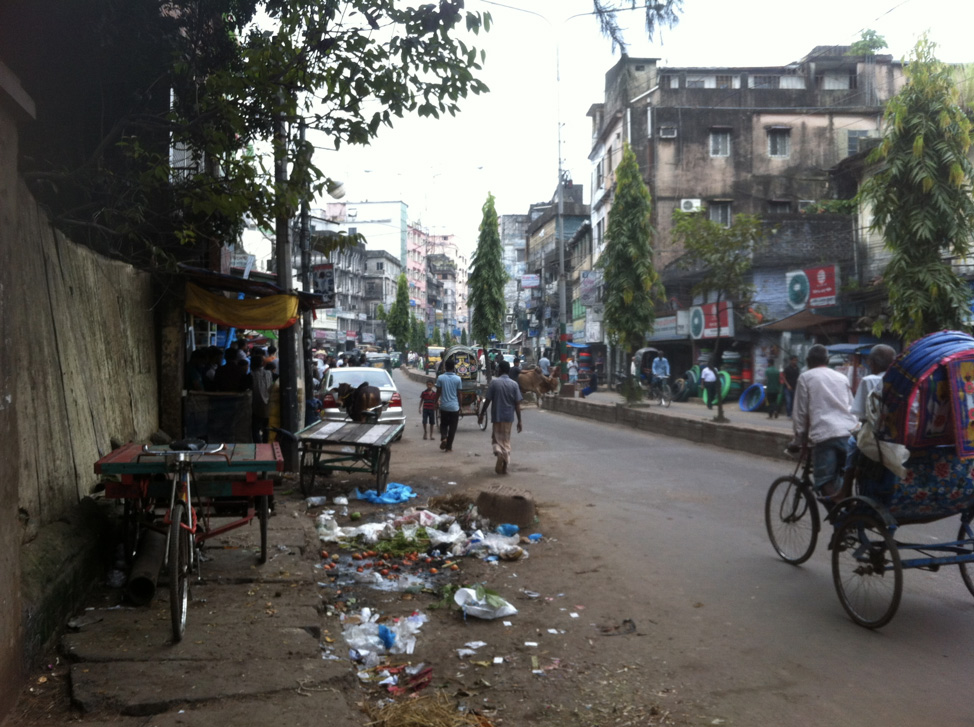
We know that this fault is active and it is very close to a densely populated region. Historical events suggest that great earthquakes in the Bangladesh region are possible. The velocity and fault models generated by our work now make it possible to model the hazards of the Bangladesh fault system more accurately.